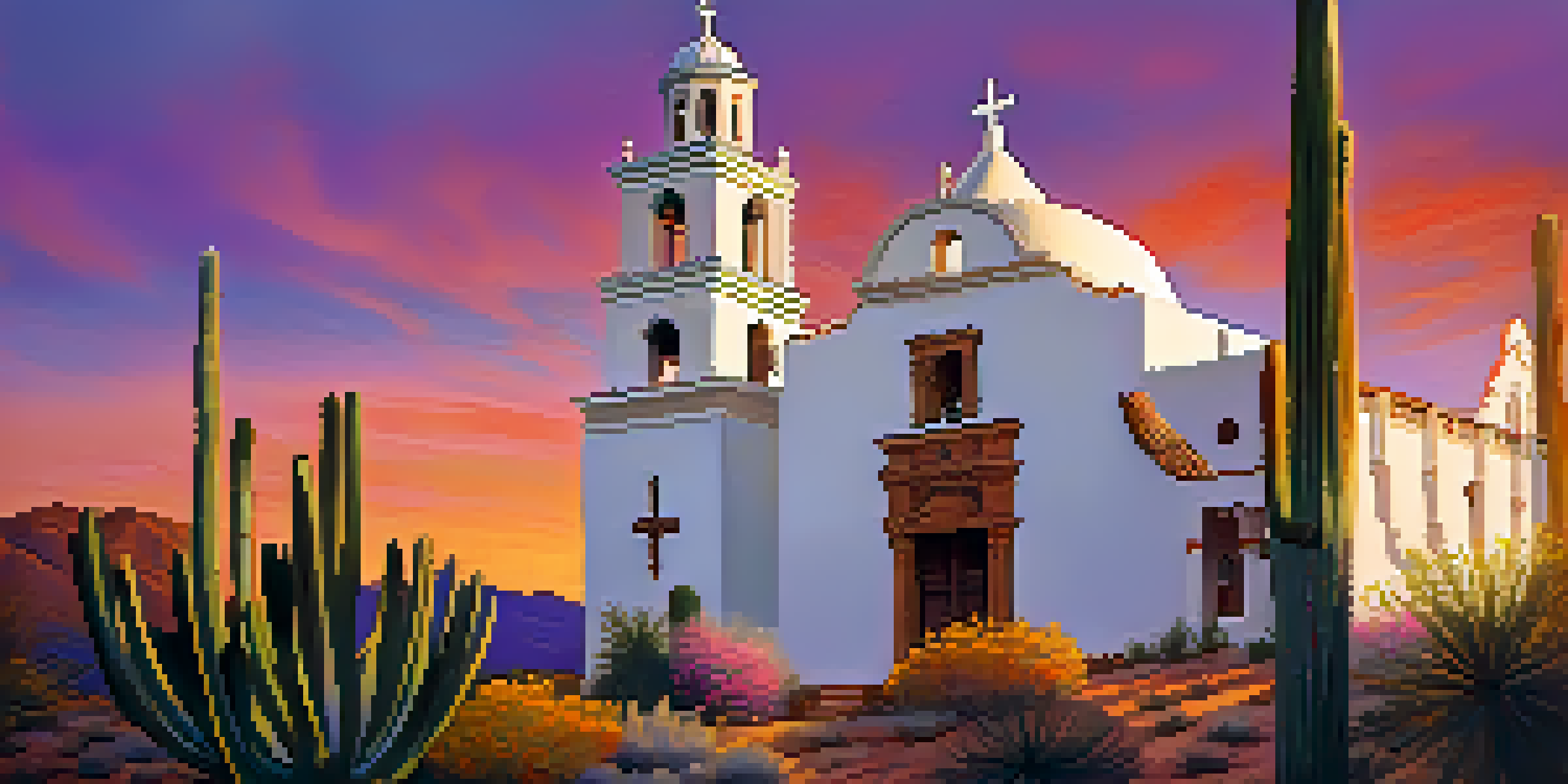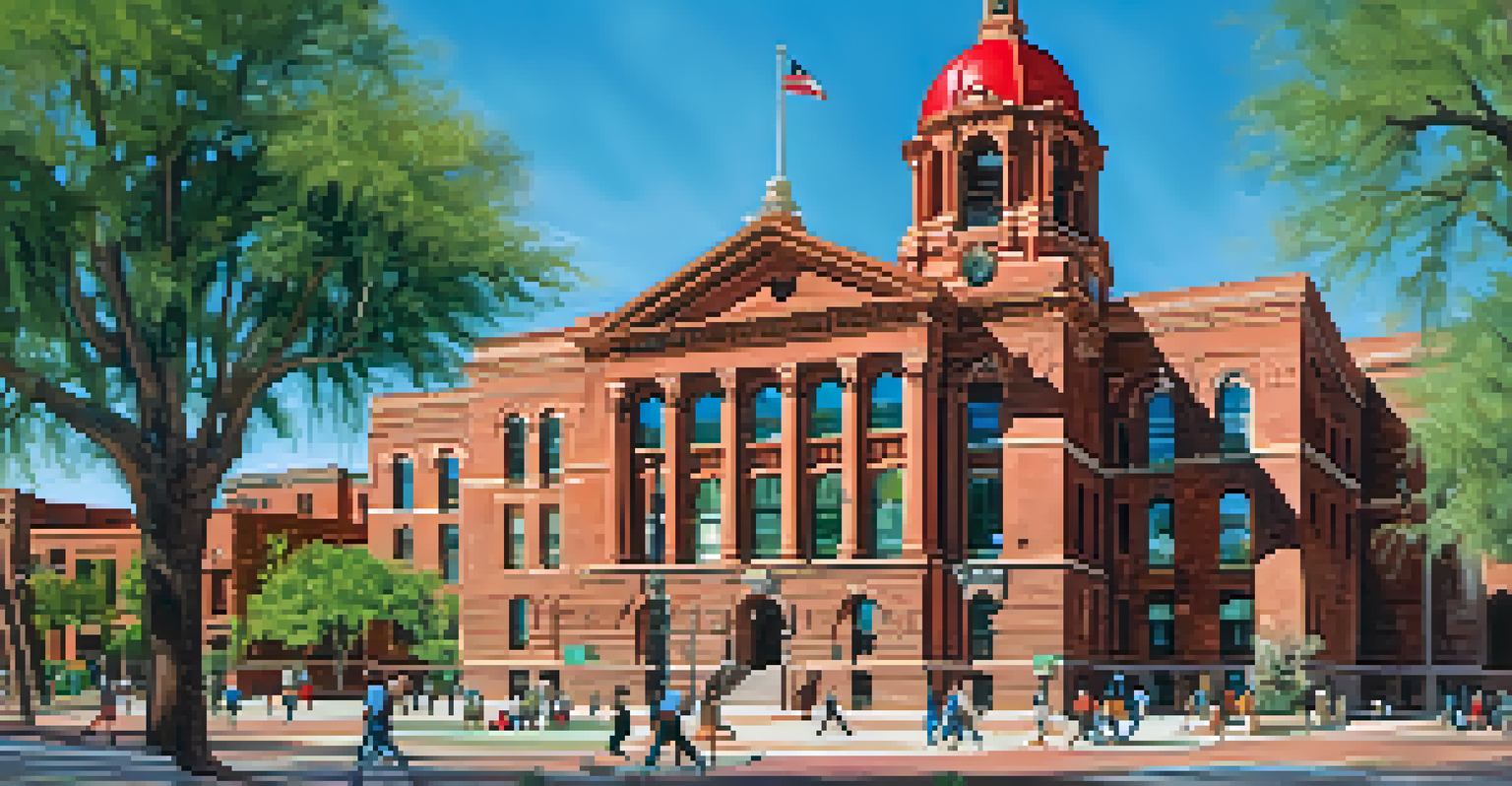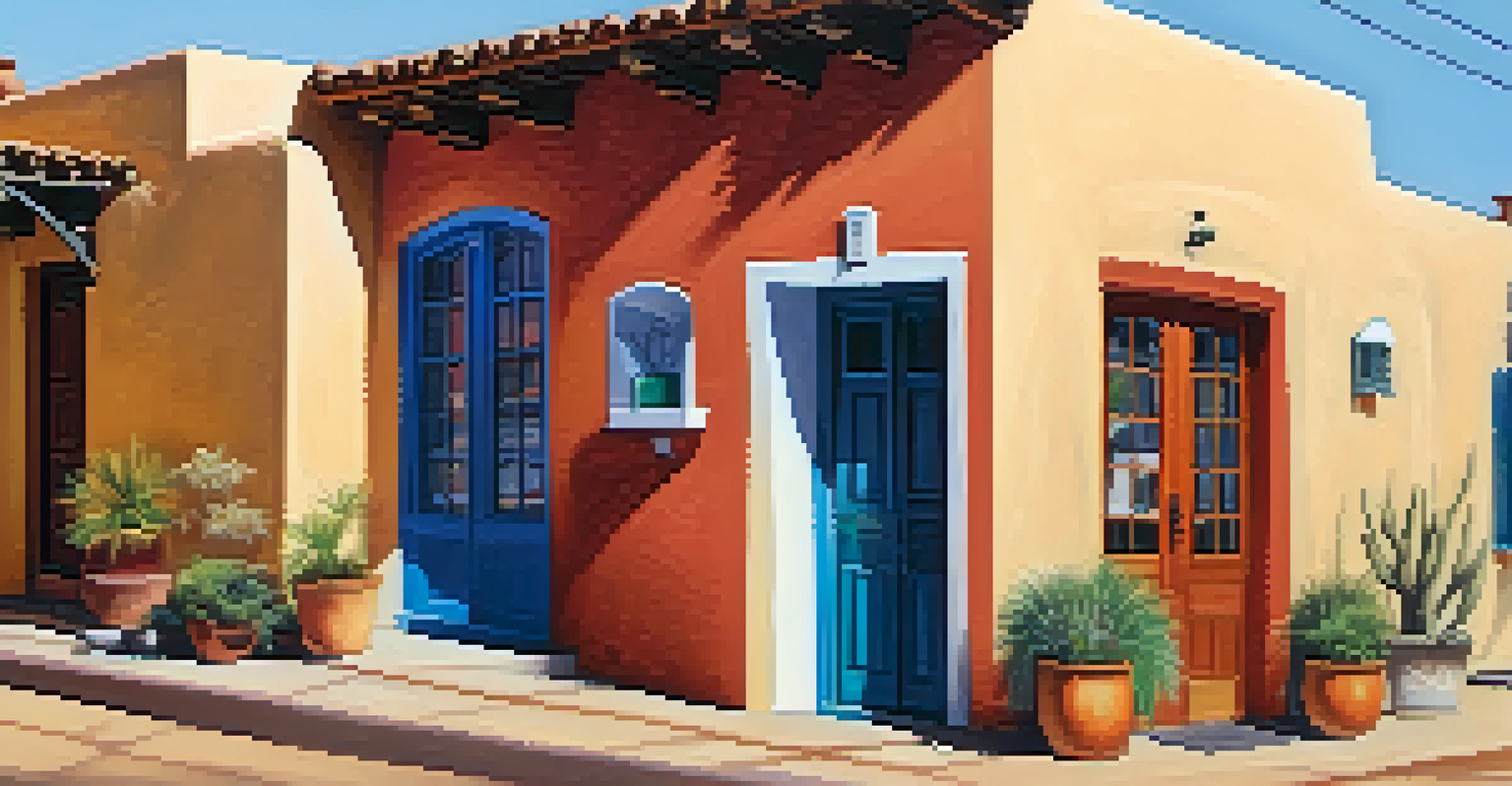Exploring Tucson's Oldest Buildings and Their Stories

The Rich History of Tucson's Oldest Buildings
Tucson, Arizona, is a city steeped in history, with buildings that tell stories from centuries past. As one of the oldest continually inhabited areas in the United States, Tucson's architecture reflects a blend of Native American, Spanish, and American influences. Each structure stands as a testament to the cultural evolution of the region and offers a glimpse into the lives of those who came before us.
Those who cannot remember the past are condemned to repeat it.
Exploring these buildings is like walking through a time capsule, where the walls echo with tales of resilience and creativity. From adobe homes to charming churches, each site is unique and contributes to the rich narrative of Tucson. As you stroll through the city, you'll find that these historic structures are more than just bricks and mortar—they are the very essence of Tucson's identity.
The stories these buildings hold are not just for history buffs; they resonate with anyone who appreciates a good tale. Whether it's the architectural style that catches your eye or the legends that surround them, Tucson's oldest buildings invite you to pause and reflect on their significance in today's world.
The Iconic Mission San Xavier del Bac
Mission San Xavier del Bac, often referred to as the 'White Dove of the Desert,' is one of Tucson's most iconic landmarks. Established in the late 18th century, this stunning example of Spanish colonial architecture serves as a vital piece of the region's history. Not only is the mission a beautiful sight, but it also represents the merging of cultures that defines Tucson.

Visitors to the mission are often struck by its intricate details, from the ornate altar to the breathtaking frescoes that adorn the walls. The mission has stood the test of time, surviving numerous challenges while still serving the community today. Its enduring presence reminds us of the deep spiritual and historical roots that run through the heart of Tucson.
Tucson's Rich Architectural History
Tucson's oldest buildings reflect a blend of cultures and tell the stories of resilience and creativity throughout the city's history.
Exploring San Xavier del Bac offers a chance to connect with the past in a tangible way. Whether you're attending a service or simply taking a moment to admire its beauty, the mission embodies the stories of those who have walked its grounds for generations.
The Historic Pima County Courthouse
The Pima County Courthouse, with its distinctive red brick and green dome, is another architectural gem in Tucson. Completed in 1929, this building is a striking example of the Pueblo Revival style, blending both Native American and Spanish influences. Its grandeur and historical significance make it a must-see for anyone interested in Tucson's heritage.
History is not a burden on the memory but an illumination of the soul.
Inside, the courthouse is adorned with murals and artwork that celebrate the region's history, showcasing significant events and figures that shaped Tucson. As you walk through its hallways, it's easy to imagine the many important decisions and cases that have taken place within these walls over the years. The courthouse not only serves as a functional building but also as a cultural landmark.
Touring the Pima County Courthouse is like stepping into a living museum. The stories contained within its walls serve to remind us of the importance of justice and community, making it a vital piece of Tucson's narrative.
The Charming El Presidio Historic District
El Presidio Historic District is a vibrant neighborhood that offers a glimpse into Tucson's past. Established in the 18th century, this area includes some of the oldest structures in the city, showcasing a variety of architectural styles. As you wander through its streets, you'll encounter adobe homes, quaint plazas, and historical markers that tell the story of Tucson's early inhabitants.
One of the most notable buildings in the district is the Old Pima County Jail, which dates back to 1889. Its unique design and historical significance make it a focal point for visitors interested in the city's darker history. Walking through El Presidio feels like stepping back in time, with every corner revealing a new story waiting to be uncovered.
Mission San Xavier's Cultural Significance
Mission San Xavier del Bac symbolizes the merging of cultures in Tucson and serves as a vital historical and spiritual landmark.
The district is not only a place for history enthusiasts; it also serves as a lively community hub. From art galleries to local shops and cafes, El Presidio merges the old with the new, creating a dynamic atmosphere that reflects the spirit of Tucson.
The Intriguing Hotel Congress
Hotel Congress is a cornerstone of Tucson's historic landscape, known for its vibrant history and lively atmosphere. Built in 1919, this establishment has hosted countless guests, including celebrities and infamous figures such as John Dillinger, who was arrested here in the 1930s. The hotel’s rustic charm and rich stories make it a beloved landmark in the city.
Visitors are drawn to the hotel's unique architecture, featuring a blend of Spanish and Mission Revival styles. Inside, the ambiance reflects the spirit of the Old West, with its vintage decor and live music events. Hotel Congress has transformed over the years but remains a gathering place for both locals and tourists alike.
Staying or dining at Hotel Congress is more than just a visit; it's an experience steeped in history. The tales of its past guests add an air of intrigue, making it a perfect spot for those who enjoy a touch of mystery along with their travels.
The Enduring Legacy of the Old Pueblo
Tucson, often referred to as the 'Old Pueblo,' is a city that embraces its history while looking toward the future. The stories behind its oldest buildings serve as a reminder of the resilience and creativity of its inhabitants. Each structure is a chapter in the ongoing narrative of Tucson, reflecting the diverse cultures that have shaped the city.
As you explore these remarkable buildings, you may find that they inspire a sense of connection to the past. The architecture acts as a bridge, linking generations and providing insight into the lives of those who have come before us. This legacy is celebrated not only in the buildings themselves but also in the stories that continue to be told.
Preserving Tucson's Historic Legacy
Community efforts are crucial for preserving Tucson's historic sites, ensuring that future generations can appreciate the city's rich heritage.
Visiting Tucson's historic sites is an invitation to engage with the community's rich heritage. By understanding the significance of these structures, we foster a deeper appreciation for the culture and history that make Tucson a unique and vibrant place to call home.
Preserving Tucson's Historic Sites for Future Generations
As we cherish Tucson's oldest buildings, it becomes increasingly important to prioritize their preservation. Many of these structures face challenges such as urban development and natural wear and tear. Community efforts, supported by local organizations, are essential to ensure that these historical treasures remain intact for future generations to enjoy.
Preservation goes beyond just maintaining the physical buildings; it involves educating the public about their significance. Programs that promote awareness and appreciation for Tucson's history help to foster a culture of stewardship. By engaging residents and visitors alike, we can create a collective effort to protect our heritage.

Ultimately, preserving Tucson's historic sites is about honoring the past while nurturing a sense of identity for the community. As we work together to safeguard these stories, we ensure that they continue to inspire and connect people for years to come.